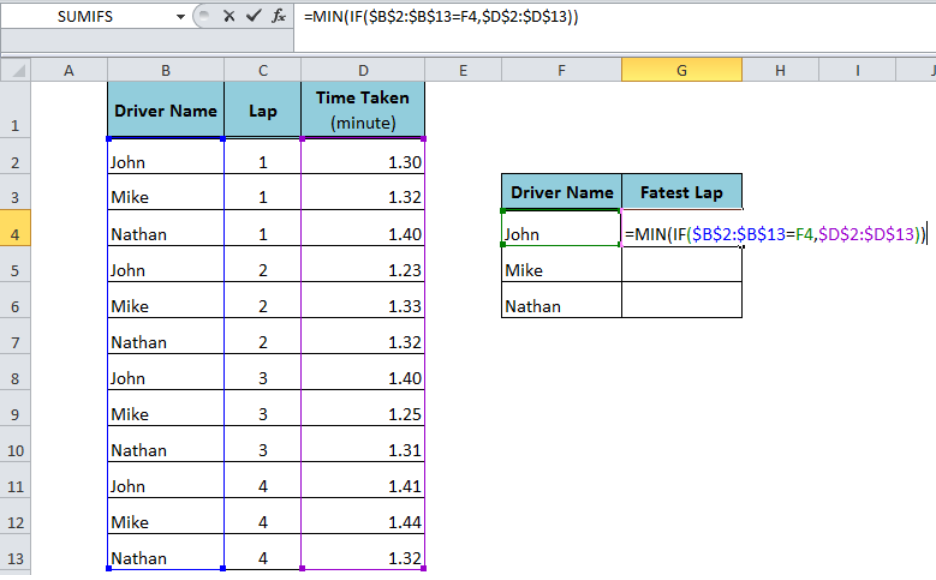- An easy-to-use Excel leave tracker template (updated for 2019). You can easily record leaves for vacations, holidays, sick days, half-days, etc. This attendance tracker allows you to track all leaves and also provides a break-up of all leaves.
- Download Excel Start File have In Time & Out Time for either Day or Night Shift and w.
- Free tools to calculate hours worked: Add up hours and minutes with our easy Time Calculator Hourly Paycheck Calculator will calculate the hours worked and the gross wages due Timesheet calculator - will calculate bi-weekly Timesheets Time Card Calculator Geek - will give you the most options to customize lunch, overtime, military time and much.
- Calculate hours worked and minus lunch time with formulas. The following formulas can help you to calculate worked time a day based on the time records. Enter this formula: =SUM((C2-B2)+(E2-D2)).24 into a blank cell beside your time record cells, F2, for instance, see screenshot.
Adding basic labels
First, you'll need to decide what kind of basic data you need in your Excel time sheet. The most common approach is to add the following basic labels:

Your employee average hour per week Online work calculator for planning employee or staff shift schedule. This works great for small business company managers to schedule their staff's shift in a simplified way.
- Employee name
- Date range covered in the timesheet (day, week, or month)
- Name of the company department
- Manager name
You can add more information if you want or need to, but a simple approach is always best.
Adding timesheet labels
Now that you've added the basic labels, you'll need to add timesheet labels to your template.

Add the dates, and divide the columns in order to clearly organize the most important data:
- Time spent working before lunch
- Time spent at lunch
- Time spent working after lunch
For clarity, we'll mark these times in the timesheet as 'Morning hours' 'Lunch time', and 'Afternoon hours'.
Excel Time Card Calculator
In the next step, we'll see how to add up 'Morning hours' and 'Afternoon hours' to get the 'Daily total' automatically.
Formula 1: Calculating daily working hours
Here's how you calculate time in a daily Excel timesheet template:
Work Hours Calculator
- Insert =sum(D8+F8) into the 'Daily total' cell (marked as G8 in this timesheet example).
- As soon as employees type the hours in the 'Morning hours' and 'Afternoon hours' cells, this time automatically gets added to the 'Daily total'.
- To use the same '=sum()' formula on the remaining days, expand the selection in your table to cover the remaining cells.
- Use the =sum() formula again in the 'Weekly total' cell with the data in the 'Daily total' column, by selecting the G8 cell, and then expanding the selection to G14 ('=sum(G8:G12)').
- As soon as employees add hours in the 'Morning hours' and 'Afternoon hours' cells, this time automatically get added to their 'Daily total', and this data automatically gets added to their 'Weekly total'.
- You'll need to select the 'Weekly total' cells (marked as G14, G30, N14, N30 in this Excel timesheet example) in order to calculate the 'Monthly total'.
- Insert =sum(G14+G30+N14+N30) into the 'Monthly total' cell (marked as P4 in this timesheet example).
- Again, as employees enter their 'Morning hours' and 'Afternoon hours' in the right cells, the 'Daily totals' and 'Weekly totals' get calculated, and the 'Monthly total' gets calculated as well.
- Select all the cells you want to unlock by holding the Ctrl key and clicking or expanding on the needed cells
- Press the Ctrl+1 on your keyboard to get the Format cells window.
- Select the Protected tab within the Format cells window, untick the Locked checkbox, and click OK to close the dialogue box.
- Once you've differentiated between locked and unlocked cells, you'll need to make sure they stay that way, by 'protecting' the sheet
- In order to open the 'protect sheet' window, press and hold Alt+H+O+P
- Once you've opened this window, make sure only the option 'select unlocked cells' is ticked.
- Add and remember a password, then close the dialogue box - your employees will have to enter this password in order to edit the unlocked cells.
- The employees will need to press and hold Alt+H+O+P to open the dialogue box again, enter the password and enable cell editing - considering they only have the password to edit unlocked sheets, your locked sheets will remain uneditable, with formulas intact.
Expanding the selection to calculate the remaining days will be important when you want to calculate 'Weekly totals'.
Formula 2: Calculating weekly working hours
Here's how you calculate time in a weekly Excel timesheet template:
You can create multiple tables like this in one Excel sheet, and then calculate 'Daily totals' and 'Weekly totals' for each. Once you've had 'Weekly totals' calculated, you'll use this data to calculate the 'Monthly total'.
Formula 3: Calculating monthly working hours
Here's how you calculate time in a monthly Excel timesheet template:
If employees change data in any of the cells, these changes will be reflected in the Monthly total.
Protecting cells and the timesheet
Once you've created your templates and defined all formulas correctly, you'll want to lock certain cells, in order to make sure your formulas remain functional and correct.
You'll also want to make sure certain cells remain unlocked, so that your employees can freely add their data - typically, you'll need 'Morning hours', 'Lunch time', 'Afternoon hours', and 'Name' cells unlocked, and formula cells locked.
By default, all your Excel cells are locked, but you'll be able to manage them in the Format cells window.
In order to unlock cells for employee editing, simply:
